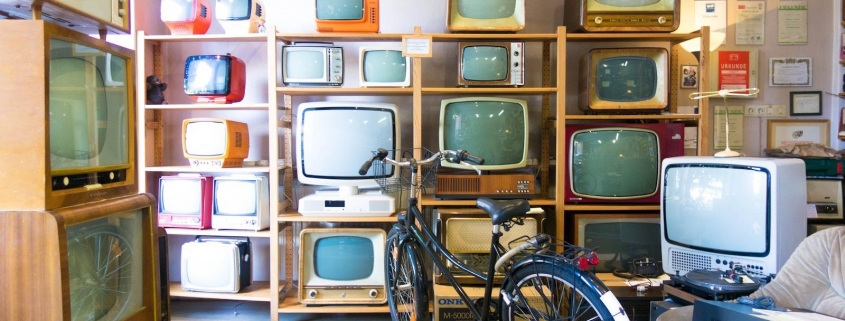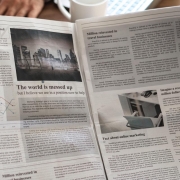More and more everyday items, including toasters and dog collars, are being connected to the web as part of the Internet of Things (IoT). Experts have predicted that by 2020 more than 50% of new businesses will run on the IoT. However, the frequency of searches regarding the meaning of the IoT suggests there is still confusion surrounding what it all means. This blog will give you all the information you need to know about the increasingly connected world.
What is the Internet of Things (IoT)?
In its simplest sense, the Internet of Things (IoT) refers to everything that is connected in some way to the Internet. However, this definition has narrowed recently, now referring to objects that communicate with each other. The IoT essentially allows devices on a private Internet connection to communicate and the IoT works to bring these devices together. This therefore helps to create a more connected world. By combining different connected devices together with automated systems, it is possible to collect information, analyse this data and then create an action. This works to help individuals with particular tasks and enables devices to learn in the process.
The most popular example of this is the smart fridge. This would use internal cameras to identify when an individual is out of a particular product, such as milk, and send a text message to remind the individual to buy some that day. In Britain it is most commonly used as part of home heating and energy use. Smart meters have clever functions that allow homeowners to turn on their heating remotely, set the temperature to turn down on sunny days or switch off if no one is home. The presence of people within the home can be detected using sensors or by seeing that your smart phone has left the house. This all works to simplify everyday tasks and improve efficiency.
Why is there a need to connect devices?
Each device collects specific data when connected to the Internet and this is used for a particular task. This data collection may be useful for a buyer and have an impact on the wider economy. For example, within industrial application, sensors on product lines can increase efficiency and reduce waste. The Internet of Things (IoT) therefore offers the opportunity to increase efficiency, helping to save time, money and even reduce emissions in many cases.
How will the Internet of Things (IoT) affect businesses?
The effect on businesses is mostly dependent upon the industry in question. Manufacturing businesses are leading in terms of the use of the IoT, as it is useful for organising machines and people and tracking where they are.
The examples of use in businesses are endless and it is predicted that progressively more and more businesses will use this technology in the future. When looking at the efficiency of a particular machine it is easy to identify the potential benefits. When this is applied to the efficiency of people however this becomes a more contentious issue. For example the security access card of an individual worker could be used to track where you are in the building, allowing bosses to monitor where their workers are in the building at any particular time. The use of the IoT for this purpose is therefore clearly more contentious than for monitoring a machine.
What is the future for the Internet of Things (IoT)?
Currently the IoT is still an emerging technology that is in its infancy. Currently there are still issues in connecting devices and there are also still security issues that need to be addressed.
Security and privacy are the biggest challenges for IoT as all these connected devices collect a significant amount of personal information. Information including when you are home is shared with other devices and stored in company databases. As soon as there becomes a financial benefit from hacking smart homes cyber criminals will find a way to do this and therefore security is one of the biggest obstacles for the IoT now and in the future.
In addition, achieving a vast, reliable IoT network requires compatible standards. In order for devices to transfer information between each other they need to be able to speak to each other. This communication will be obstructed by differences in standards between devices. If standardisation occurs this will enable more and more devices to be connected.
Despite these issues, it is clear that in the future everyday tasks will become simpler due to the use of the Internet of Things (IoT). For example finding a car parking space in busy areas and using smart fridges to identify items that need to be replenished will improve small aspects of the everyday lives of individuals.







Trackbacks & Pingbacks
[…] am sure that everyone has heard of Amazon Echo and Smart Watches such as the Fitbit. However, what is the Internet of Things? Lots of research focuses on IoT in business and commerce. This blog will answer the question: what […]
Leave a Reply
Want to join the discussion?Feel free to contribute!